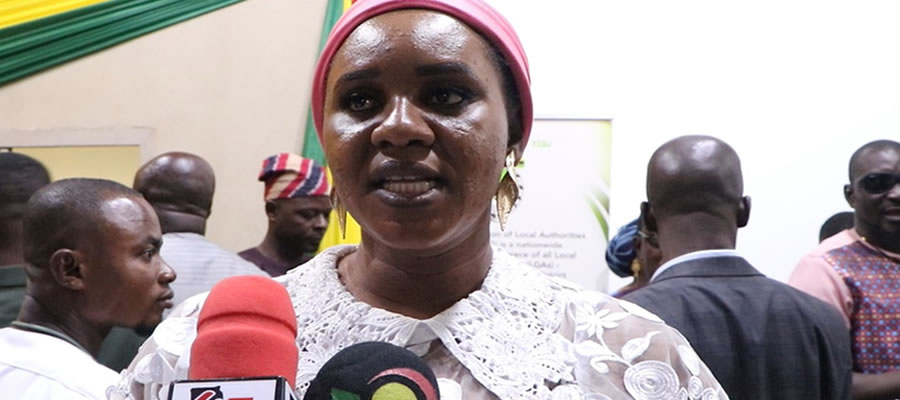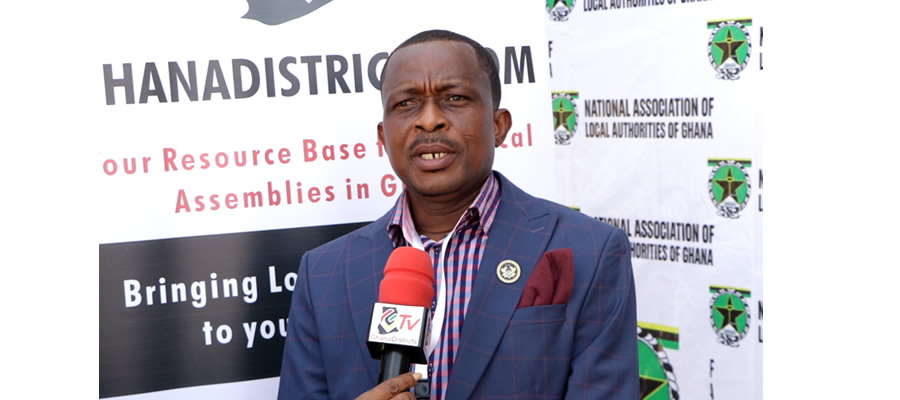

Settlement Systems
An essential element in the distribution of services and infrastructure across geographic space is the settlement system. Thus, the hierarchy of settlements influences accessibility to services such as health, postal services, agriculture extension, banking, police and others.
Human Settlement Patterns
The settlement pattern of the Municipality can be described as highly rural, with the exception of Drobo, Japekrom, Dwenem, Zezera, Bebianiha and to some extent Adamsu and Gonasua which are urban by the population criteria. Settlements are fairly distributed in the Municipality, with the major ones along the main Berekum–Sampa road. The scattered nature and small sizes of most settlements in the Municipality pose particular difficulties in the provision of facilities which require a minimum population threshold to make them viable.
Through the application of Scalogram, a centrality index was calculated for settlements in the Municipality to give an indication of the distribution of the services. Drobo and Japekrom had the highest centrality index. The next highest centrality index is Adamsu. From the analysis, Drobo and Japekrom could be categorized as first order settlement in the Municipality.
It could be observed that, the Municipality’s educational infrastructure is predominated by primary or basic school facilities, with only six Senior High Schools and one tertiary institution (a campus of Berekum Nursing and Midwifery Training College). On health infrastructure, the Municipal has only one district Mission (CHAG) hospital, one polyclinic with support services from few rural health centers and CHPs. The situation may pose some challenges to the health care delivery in the Municipality as the population is outgrowing existing facilities. The same can be said about water and sanitation in that the Municipality as much concentration is on the provision of boreholes to the detriment of sanitation facilities.
District Poverty Profile and Potentials
The Municipal has a unique socio-economic features and poverty manifestation. The manifestation in the Municipal comes in the form of Poor health status, Poor Housing, High illiteracy rate mainly due to a high rate of school dropout. The situation compels most people in the rural communities to engage in menial jobs, wild beliefs and superstition, unrefined herbal medicinal practices and to some extent stealing as current copping mechanisms.
Analyzing from the above table, there is the need for stakeholders to strategize towards ameliorating the impact of the challenges and also enhances the socio-economic potentials of the people.
Gender Analysis
Popular participation in decision-making processes at the local level is vital in the decentralization process of Ghana. However, women and other vulnerable groups who arguably form the majority of the population are underrepresented in the Assemblies.
Issues relating to development of communities, women and other identifiable vulnerable groups such as children, the poor and the physically challenged have not been well addressed. Their roles and interest are often ignored in decision-making. This therefore calls for the inclusion of these groups of people who constitute a substantial part of the population of the District to play a major role in local decision-making.
Societal Roles of Men, Women, Boys and Girls
Gender roles are basically the different tasks, responsibilities and expectations the society has defined and allocated to men, women, boys and girls. Generally, three (3) major gender roles can be identified; reproductive, productive and community management roles.
Community management roles involve the collective organization of social events, maintaining family links, managing council resources, developing community infrastructure, making-decisions for the community and ensuring that the household support each other. Women ensure that basic resources are available for the household, including cooking, cleaning and healing. Maintaining cleanliness of the community, preparing places and foods for festivals, funerals and other communal events are assigned to women and children. This has been perceived to be an extension of domestic work. Women are responsible for allocating the limited resources, services and infrastructure to achieve optimal results. However, local political activities which involve participation in public decision-making in the district favours men compared to women.
Women, men, boys and girls are likely to be involved in all three broad areas of roles. In the Municipality, however, women do almost all of the reproductive and much of the productive work. Any intervention in one area will affect the other areas. Women’s’ work load can prevent them from participating in development projects. When they do participate, extra time spot farming, producing, training or meeting means less time for other tasks such as child care or food preparation. Table 1.32 below shows the defined societal roles and responsibilities, needs and interests of the various gender groups identified in the Municipality.
Table 1.29: Gender Roles as Socially Defined in the Municipality
Source: JSDA, 2016
Access to and Control over Resources and Benefits
Gender roles also affect how men and women have access to and control over resources, benefits and decision-making. Having access means having the opportunity to use a resource or influence a decision but it does not mean having control over it.
Resources such as land, equipment, tools, labour; cash/credit, employable/income earning skills, employment, leadership, education and information, self-confidence and credibility and time are generally critical but scarce for women.
In the Municipality, women have access to most of the resources they use to perform their roles, but no control over them. For instance, women have access to land, food, income, local political processes but no control over ownership, its allocation, how it can be spent and little influence and control over the nature of issues to be addressed and final decisions.
A study conducted reveals that access to and control of the Municipal resources is skewed towards men. However, further disaggregation of the data shows, women control most of the productive roles (petty trading, fish smoking etc) are dominated by women. The Assembly therefore has to promote these sub-sectors to help bridge the gap in other roles especially in community management roles and political roles.
Migration (Emigration and Immigration) Issues in the Municipality
The Municipality offers economic opportunities that attract migrants from other parts of the country, especially the Northern Regions. Migrants constitute about 12% of the total district population.
The potentials notwithstanding, there is significant about 10% out-migration by the youth and farmers. While most farmers sojourn in the Western Region where they own cocoa farms, the youth travel abroad or to major cities, urban centers and Libya in search of “greener pastures”.
These migrants through their out activities do send home some remittances to their families for general up keep. There is the need for stakeholders to put certain facilities in the district which will serve as counter magnet to the out drift population.
Population dynamics
The demographic characteristics of an area are very useful indicators for socio-economic decision making at all levels of society. These include the population size, growth rate, distribution, the age-sex structure and ratio.
Population Size and Growth Rate
The total population of the Jaman South Municipal is 92,649 (43,459 males and 49,190 females) according to the 2010 Population and Housing Census. Table 1.34 below shows the District, Regional and National population for the censual periods 1970, 1984, 2000, 2010. It also presents projected population from 2011-2014 based on the respective growth rates (2.2, 2.7 and 2.8)
Age Composition and Dependency Ratio
Data from the 2010 Population and Housing Census indicates that the district has a youthful population. As presented in Table 1.34, Ages between (0 -14) years constitute about 41 percent of the total population, whiles those 65 years and above constitute about only five percent of the entire population. Over half of the population is within the active age group (15-64).
Data emanating from the source shows that the Municipality has a total Age dependency ratio of 84.7. This means, approximately each person in the productive ages have one person to carter for in the dependent population. This appears higher as compared to both the region and the country ratio of 81.3 and 76.0 respectively.
Table 1.31: Population distribution by Age, Sex and Locality
Sex Composition
The Municipal population comprises 53.1% female and 46.9% male. The Female population is 49,190 as against 43,459 male (2010 Population and Housing Census. The sex ratio of the district (2010) is 1: 0.46 compared to 1: 0.97 (2000) for the nation. This calls for some efforts to be put in place for managing the situation form developing out of proportion.
Household Characteristics
The households’ population of the district stood at 20,178, as at 2010, and with an average households size averages 5.5 compared to the national average of 5.0. This indicates the pressure that is exerted on household income. One reason accounting for this situation is the practice of extended family systems. This practice is more pronounced in rural settings than urban centers. This further explains why rural income figures are relatively low with virtually no savings.
Population Structure and Labour Force
The labour force (persons between 15-64 years) constitutes about 54% of the total population. This is strong enough to support economic activities of both the private and public sectors in the Municipality. As indicated in Fig.1.18 below, children and the aged constitute about 46% of the total population, giving a dependency ratio of about 1:0.5 in the Municipality. This means about 10 workers in the Municipality cater for about 5 dependents on the average, all things being equal. However, with significantly high prevalence of unemployment and under-employment in the Municipality, the economic dependency ratio is higher in reality. The huge dependency population could cause some socio-economic pressure on those who engaged in agriculture, since they would not produce enough to feed more mouths as a result of the rudimentary agriculture.
Date Created : 6/9/2023 12:00:00 AM












 facebook
facebook
 twitter
twitter
 Youtube
Youtube
 +233 593 831 280
+233 593 831 280 0800 430 430
0800 430 430 GPS: GE-231-4383
GPS: GE-231-4383 info@ghanadistricts.com
info@ghanadistricts.com Box GP1044, Accra, Ghana
Box GP1044, Accra, Ghana